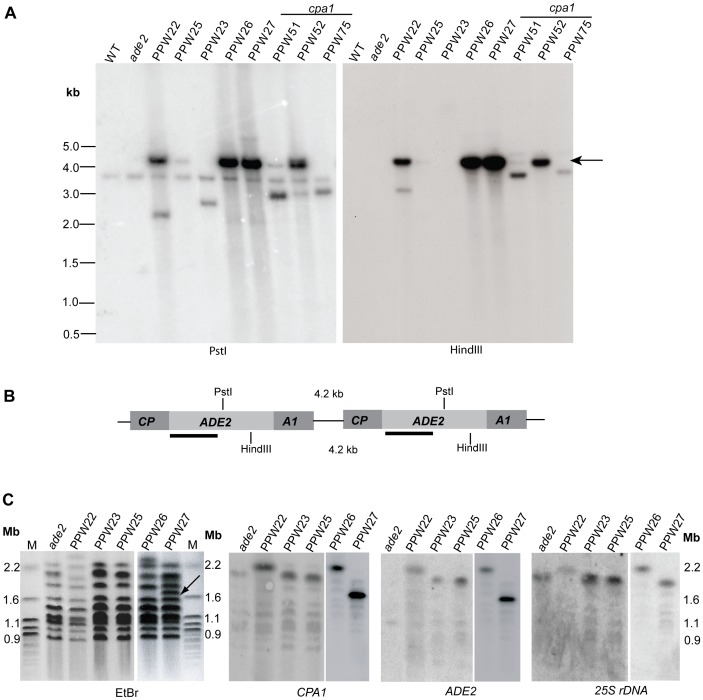Figure 3. The cpa1::ADE2 transgenes are arranged as tandem repeats in PPW22, PPW26, and PPW27.
A) Digests of genomic DNA from the representative transformed strains. Each DNA sample was cut by PstI (left) and HindIII (right), followed with Southern blot analysis using ADE2 as a probe. Both PstI and HindIII cleave only once within the cpa1::ADE2 transgene. An intense ∼4.2 kb band (indicated by arrows) can be detected when the cpa1::ADE2 transgene is tandemly repeated. B) The deduced arrangement of the tandem repetitive unit of the cpa1::ADE2 transgene is depicted. The ADE2 probe used in the top Southern analysis is indicated as black lines. C) Protoplasts from the host untransformed strain (M049) and PPW22, PPW23, PPW25, PPW26, and PPW27 strains were prepared and chromosomal DNA separated by CHEF gel electrophoresis. The ethidium bromide-stained gel is shown in the left panel. To determine the chromosomal locations of the cpa1::ADE2 locus, the DNA was transferred to a nylon membrane, followed by hybridization with probes to the CPA1, ADE2, or 25S rDNA genes. The cpa1::ADE2 transgenes map to chromosome 2 in PPW22, PPW23, PPW25, and PPW26 strains. In PPW27, the cpa1::ADE2 transgenes are located on a smaller chromosome (indicated by an arrow). M stands for the CHEF DNA size marker.

